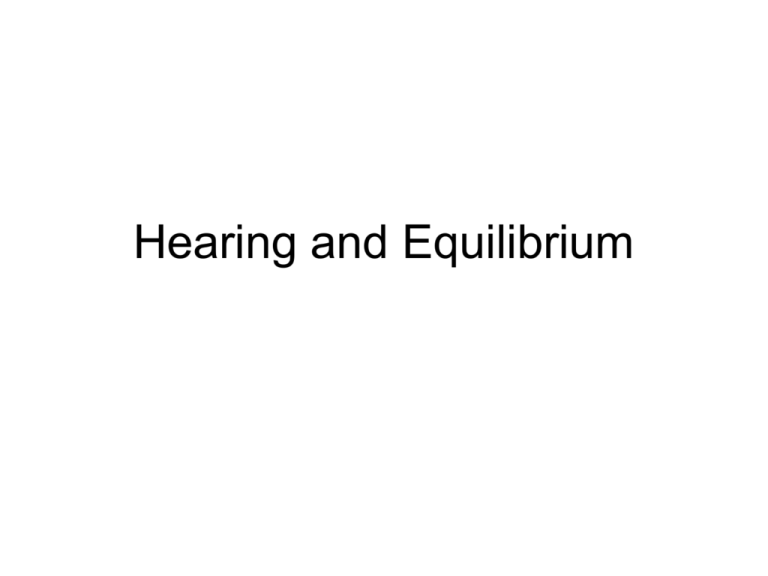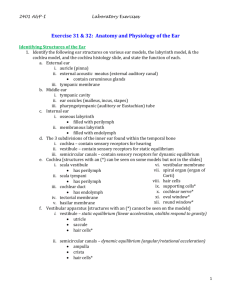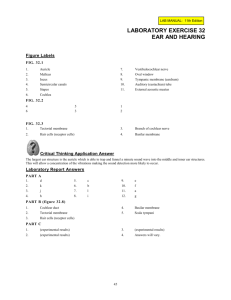Human Anatomy and Physiology I
advertisement

Hearing and Equilibrium Auditory sensations and Equilibrium Hearing and equilibrium rely on mechanoreceptors The ear is divided into three parts: Outer ear Middle ear Inner ear Outer ear: Ceruminous glands – Cerumen - ear wax in external auditory meatus Middle ear: Tympanic antrum – opening into mastoid process Auditory (Eustachian) Tube Otitis media – inflammation of the MIDDLE ear Auditory ossicles or ear bones Tensor tympani muscle Stapedius muscle Tympanic reflex INNER EAR : Cochlea – hearing Vestibule – static equilibrium Semicircular canals – dynamic equilibrium Organ of Corti Vestibulocochlear nerve – cranial nerve VIII Audible range: 20 -- 20,000 hertz Ossicles amplify sound 22 X Some nerve fibers cross over to opposite side of brain; some don’t. Why? Equilibrium – Balance Static equilibrium – maintenance of body posture relative to gravity while the body is still. Dynamic equilibrium – maintenance of the body posture (mainly the head) in response to sudden movements. Tracking a moving object. Static Equilibrium Inside the vestibule are two chambers : utricle and saccule. Regions of hair cells and supporting cells called maculae. Otoliths – “ear rocks” Dynamic Equilibrium Semicircular canals In ampulla is the crista ampullaris – contains hair cells and supporting cells covered by a gelatinous mass called the cupula. Neurological connections between eyes and semicircular canals – for tracking Nystagmus



